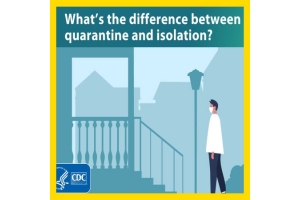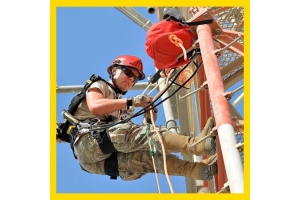Currency
-
August 29, 2022Lyon, France — The World Health Organization has reclassified firefighting as a carcinogenic profession.
The organization’s International Agency for Research on Cancer recently convened a panel of 25 scientists from eight countries. They examined 52 cohort and case-control studies, 12 case reports, and seven meta-analyses before elevating the firefighting profession to an IARC Group 1 designation – meaning it’s carcinogenic to humans. IARC’s previous classifications deemed it a possibility that firefighters could develop cancer.
The panel concluded that firefighters around the world are exposed to a range of cancer-causing toxins on the job, and “sufficient evidence” exists that they’re at increased risk for bladder cancer and mesothelioma, which impact tissue lining the lungs and other organs. Additionally, “limited evidence” links firefighters to an elevated -
August 29, 2022Assistant Secretary of Labor for OSHA Douglas Parker said the agency is still working to address COVID-19 in the healthcare industry while preparing rulemaking for a permanent infectious disease standard.
Parker, speaking at the American Society of Safety Professionals 2022 Conference and Expo, said OSHA is focusing its efforts on COVID-19’s impact on health care first, before addressing the need for a broad standard to cover infectious diseases in general.
COVID emphasis program will continue
Because of another increase in hospitalizations from COVID-19 across the U.S., OSHA isn’t letting up COVID-related enforcement activities or working on a COVID-19 standard specifically for the healthcare industry.
The agency, according to Parker, is poised to announce an extension to its COVID-19 national emphasis program (NEP), which was set to expire at the end of July.
That NEP resulted in a push at the beginning of 2022 -
August 29, 2022Employees who are impaired put themselves and their organization at risk.
In a recent survey by the National Safety Council (NSC), 45 percent of respondents said “impairment was causing more near misses” at work. Nearly 40 percent reported that impairment resulted in more injuries.
Employee impairment can be caused by alcohol, substances such as opioids or cannabis, mental health conditions, medical issues, or fatigue.
A potential way to address impairment in the workplace is to use Impairment Detection Technology (IDT). This technology, according to NSC, can be used to identify different kinds of impairment and determine if a worker is fit to work. Some IDTs can detect multiple forms of impairment, not just one.
Few respondents in the NSC survey said their companies use IDTs, only 16 percent total. However, many reported that their companies -
August 29, 2022In The ONE Thing: The Surprisingly Simple Truth About Extraordinary Results by Gary Keller and Jay Papasan, the authors share physicist Dr. Lorne Whitehead’s work demonstrating that a domino is capable of knocking down another domino one-and-a-half times its size. What that means is that a domino that is just 5 millimeters tall can knock down a domino 7.5 millimeters tall, which then could knock down a domino 11.25 millimeters tall. In such a manner, it would only take 29 dominoes to knock down the Empire State Building.
To help readers identify their own first domino, the book suggests they ask themselves the following question: “What’s the ONE Thing I can do such that by doing it everything else will be easier or unnecessary?”
Inspired by the book, the author surveyed and interviewed safety professionals and company leaders and discovered a few common themes -
August 24, 2022If you’ve ever experienced an unexpected visit from an OSHA inspector, you know how important it is to be prepared. If you haven’t, consider this: OSHA has jurisdiction over 7 million worksites and, even in the midst of the COVID-19 pandemic in 2020, they still conducted over 21,000 inspections. These inspections are often unannounced, and since OSHA cites falling from heights as one of the most common causes of workplace injury, it pays to ensure that your rooftop fall protection is in full compliance ahead of time.
When it comes to preparing your rooftop for inspection, there are five main areas of concern: access, edges, equipment, openings, and navigation.
Let’s closer look at the five areas of concern:
1). Access
While it’s logical to assume that most falls occur once people are -
August 24, 2022A supervisor at an Ontario company has been told to pay a five-figure sum following the death of a worker.
Yuqin Liu, supervisor at L.Z. Refrigeration Inc., was fined $20,000 following a guilty plea in Provincial Offences Court in Toronto, Yuqin Liu. The supervisor must also pay a 25 per cent victim fine surcharge as required by the Provincial Offences Act, to be credited to a special provincial government fund to assist victims of crime.
The penalty stems from a March 13, 2020, incident. At the time of the incident, L.Z. Refrigeration Inc. was hired as a subcontractor to install refrigeration panels for a walk-in, cold storage room at the workplace. Yuqin Liu was a director and a supervisor of L.Z. Refrigeration Inc.
On that day, at approximately 1pm, the worker was by himself operating an EWP.
At some point, the worker activated the Elevating -
August 24, 2022Just having a safety procedure in place is not enough. Procedures have to be followed to be effective and failing to do so can result in fatal consequences, as a recent Mine Safety and Health (MSHA) investigation illustrates.
MSHA investigators were called to the Freeport-McMoRan Morenci mine in Greenlee County, Arizona, on Sept. 15, 2021, to investigate a fatality involving a contract welder who died while working with argon gas in a confined space.
The contract company, PVB Fabrications, had a confined space safety procedure created jointly with the mine operator, but much of it had been ignored, leading to the welder’s death.
Argon gas used to purge ambient air
At 6 a.m. on Sept. 15, 2021, Cleveland Sloan, a 33-year-old contract welder with more than 10 years of mining experience, traveled with the rest of his PVB crew to work on a pipe project at the mine. The crew attended a general safety meeting and a Job Risk Assessment, -
August 24, 2022
What is health and safety in the workplace?
Workplace health and safety is all about sensibly managing risks to protect your workers and your business. Good health and safety management is characterized by strong leadership involving your managers, workers, suppliers, contractors and customers. In a global context, health and safety is also an essential part of the movement towards sustainable development.
Why is it important?
It’s good to know the benefits, so we’ve listed 10 reasons why health and safety is important.
- It is morally right to ensure your workers return home safe and healthy at the end of every working day.
- By protecting your workers, you reduce absences, ensuring that your workplace is more efficient and productive.
- Research shows that workers are more productive in workplaces
-
August 08, 2022Washington — The Environmental Protection Agency is requesting public comment on a draft revised final risk evaluation that states methylene chloride, as a whole chemical substance, poses “unreasonable risk” to workers under certain conditions.
According to a notice published in the July 5 Federal Register, methylene chloride – frequently used for bathtub refinishing – is among the first 10 chemicals under evaluation for potential health and environmental risks under the Frank R. Lautenberg Chemical Safety for the 21st Century Act.
In a June 2020 final risk evaluation, EPA found that methylene chloride poses unreasonable risk to workers involved in various operations, including:
- Plastic and rubber manufacturing
- Electrical equipment, appliance and component manufacturing
- Oil and gas drilling, extraction and support activities
-
August 08, 2022After an ammonia leak, a pork and poultry producer was cited by OSHA.
In January 2022, an ammonia leak caused 50 workers to evacuate a Georgia poultry processing plant. According to a press release, two workers were hospitalized and one was treated on the scene.
An OSHA investigation determined the cause of the leak to be “uncontrolled temperature and pressure conditions.” The agency cited Pilgrim’s Pride Corp. for nine serious citations and proposed penalties of $110,630.
Per the press release, the citations were for “inadequately implementing and maintaining the process safety management program for controlling anhydrous ammonia hazards in industrial refrigeration systems. Specifically, the employer failed to:
- Confirm a pre-startup safety review before introducing a highly hazardous chemical into an existing process, and include instructions









